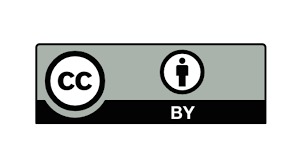Determinación de la habilidad cognitiva en la resolución de problemas matemáticos de los estudiantes de Ciencias Empresariales de la Universidad Francisco de Paula Santander
Determinación de la habilidad cognitiva en la resolución de problemas matemáticos de los estudiantes de Ciencias Empresariales de la Universidad Francisco de Paula Santander
Main Article Content
The Constitution of 1991 in Colombia led the revolution in education, increasing political finding appropriate and effective to meet the country’s institutional reality, and promote improvement of the system to quality, efficiency, equity and relevance. Taking the State mechanisms to assess, as it is, a higher level of quality reviews of higher education (ECAES). Therefore, it is the responsibility of educational institutions, from the results, implement improvement plans to enhance the strengths and minimize weaknesses. This particular field of this research, descriptive, to determine cognitive ability in solving mathematical problems of business students at the University Francisco de Paula Santander. To comply with the proposed, the research is based on three theories: The theory of human intelligence triarchic Sternberg’s theory Vergnaud’s conceptual fields and the theory of the stages of Polya’s problem-solving. Possible to develop four tests: C1, knowledge in reading comprehension, C2, expertise in selecting the plan, C3, knowledge in the selection of strategies and C4, knowledge in implementing the work plan; applied consecutively to a sample of 75 students of Administration and Accounts of the third and fourth semester. The analysis of the reliability and psychometric study each of them and holistic approach to success and continuity of the phases of the aforementioned resolution, as well as the views of some students participating in the test. The previous study shows that students did not perform the whole process of the four phases in the different situations arising, in phase three, where more advanced approach was ten, with 12 percent and in phase 2 21 percent. Furthermore, they have weaknesses in reading comprehension and analysis of problems requiring conceptual strength. For this reason, proposes a method conducive to improving the weaknesses found and also allow future research in this field.
Downloads
Article Details
Ary, D. (1989). Introducción a la investigación
pedagógica. México: McGraw-Hill.
Archila Guío, J. (2013). Educación y pedagogía en el
contexto del paradigma emergente: una nueva forma
de pensar y percibir el mundo para la formación de
ciudadanía. Revista Logos Ciencia & Tecnología,
(1), 139-149. doi:http://dx.doi.org/10.22335/rlct.v5i1.12
Exámenes de Calidad de la Educación Superiores
Administración, Marco de fundamentación conceptual,
ECAES (2004), Unión temporal PROCAD,
Bogotá D. C. [Documento en línea]. Disponible:
http://www.mineducación.gov.co o www.
Icfes.gov.co [Consulta: 2009, Marzo 21].
Lester, F. K. (1983). Trends and issues in mathematical
problem solving research. En Lesh, R.
y Landau, M. (Eds.), Acquisition of mathematical
concepts and processes. New York: Academic
Press.
Moreira, M. (2002) La teoría de los campos conceptuales
de Vergnaud, la enseñanza de las ciencias
y la investigación en el área, Instituto de Física,
UFRGS, Caixa Postal 15051, Porto Alegre.
Polya, G. (1957). How to solve it. Garden City,
New York: Doubleday Anchor. En castellano,
Cómo plantear y resolver problemas. México: Trillas,
Serrano, F.J. (1994). Evaluación de la interacción
de los estilos de enseñanza y aprendizaje en los
contextos escolares. Murcia: Tesis doctoral
Sternberg, R.J. y Rifkin, B.(1979). The development
of analogical reasoning processes. Jounal of
Experimental Child Psychology, 27, 195-232.
Sternberg, R.J. (1985b). Human intelligence: the
model is the message. Science, 230, 1111-1118.
UPEL (2003) Manual de trabajo de grado de especialización
y maestría y tesis doctorales. Venezuela:
FEDUPEL.
Vergnaud, G. (1982) A classification of cognitive
tasks and operations of thought involved in
addition and subtraction problems. In carpenter,
T.; Moser, J. & Romberg, T. (1982). Addition and
subtraction. A cognitive perspective. Hillsdale, N.
J.: Lawrence Erlbaum. Pp. 39-59.
Vergnaud, G. (1983 a). Quelques problèmes de la
didactique a propos d’un example: les structures
additives. Atelier Internacional d’Eté: Recherché
en Didactique de la physique. La londe les Maures,
Francia, 26 de Junio a 13 de Julio.
Vergnaud, G. (1983 b). Multiplicative structures.
In Lesh, R. and Landau, M. (Eds.) Acquisition of
Mathemtics Concepts and Processes. New York:
Academic Press Inc. Pp. 127-174.







